- Home
- Michael Chabon
Fight of the Century Page 7
Fight of the Century Read online
Page 7
* * *
On January 27, 1967, the command module of the Apollo 1 spacecraft caught fire during a launch rehearsal test, killing astronauts Virgil “Gus” Grissom, Ed White, and Roger Chaffee. Several things had gone wrong on the morning of the test, from a foul odor in the breathing oxygen of the crew’s suits to a faulty communication system. “How are we going to get to the moon if we can’t talk between two or three buildings?” Grissom asked. Hours later, the word, “Fire!” A stray spark, a pure oxygen environment, a hatch door that wouldn’t open. The three men became the first and last casualties of the Apollo moon landing program.
Many of the schools in my hometown of Huntsville, Alabama, “The Rocket City,” home of the Marshall Space Flight Center, are named in commemoration of the people and spacecrafts that have perished over the sixty years of NASA’s space flight programs. There’s Challenger Middle School, where my younger brother went for a time. There’s Chaffee Elementary, which is still open, and Ed White Middle, which has since closed. My high school, Virgil I. Grissom High, opened its doors in 1969. Today, sixty-five years after Brown v. Board of Education of Topeka ruled that separate educational facilities are inherently unequal, the Rocket City is still trying to get out from under a federal desegregation order that was issued the year after Grissom High opened.
I never gave much thought to space travel when I was a child. Though my imagination was big and wild, it had always been tethered to Earth. By the time my parents announced we were headed to Huntsville, my family had already moved three times, across continents and states. Earth had enough upheaval and uncertainty all its own. Why go searching for more? My parents told my brother and me that depending on which house they chose, we’d be headed to school at either Mountain Gap or Challenger. I remember hoping they’d choose the Mountain Gap house because who would want to go to a school with challenge in its name? A school named after a shuttle that exploded a mere seventy-three seconds after liftoff? I wanted to stay grounded.
Mountain Gap Elementary School was one mile from the house my family rented on Running Meade Trail. On mornings when neither of my parents could drive me to school, I walked, past the Publix and the gas station and Aldridge Creek, and sometimes the only other black person I would see on my way there was the crossing guard, with her yellow jacket and her white gloves. She always waved me through traffic with a smile, her stop sign held high. She knew who my brother was without me ever having to tell her. In fact, nearly everyone in that neighborhood recognized my family by sight by the simple fact that we were among the handful of black families that lived in southeast Huntsville, the white part of town. “You’re that black professor’s kid,” a stranger once said to me. I’d lived there long enough not to wonder how he knew. Years later, when I asked my parents whether it ever bothered them, being the only black family for miles around, remembering how much those stares and comments had bothered me, they shrugged it off. “The schools were better,” they said.
It is impossible to talk about schools in Alabama, indeed schools all across America, without also talking about race. This was true in 1963, when Dr. Sonnie Wellington Hereford III filed the lawsuit against the Huntsville Public School system that enabled his son, Sonnie Hereford IV, and four other black students in Huntsville to become the first children to integrate public schools in Alabama, and it is still true today. Today, south Huntsville is white, and north Huntsville is black. The school zones reflect this, and the quality of the schools within these zones reflects the history of racism in America. “The schools were better,” my parents said, but what they didn’t say, what they didn’t have to say, was that the schools were better because they were whiter—that nothing in America, not even its public schools, escapes the taint of white supremacy. My parents, African immigrants unattuned to the nuances of race in their new country, had come to the United States to further my father’s education as well as to provide greater opportunities for their children. They made a choice unavailable to many African Americans, a choice they should never have been required to make.
When the Brown v. Board of Education ruling was handed down on May 17, 1954, the Court asked that public schools move toward desegregation “with all deliberate speed,” but as many journalists and scholars have pointed out, “deliberate speed” meant different things to different states. If the word deliberate is to be taken at its dictionary definition, then it can in fact be interpreted as the opposite of speedy, a calculated and unhurried way of processing something before acting on it. And in a state once governed by a man who declared, “Segregation now, segregation tomorrow, segregation forever,” it comes as little surprise that desegregation wasn’t a matter of great urgency.
Many school districts across the country are still under federal desegregation orders from the 1960s and 1970s, and “[inactivity] is not unusual among longstanding segregation cases.” Perhaps the Huntsville City School Board was expecting more of that same inactivity in 2014 when it submitted a modification of school zones that would have further entrenched segregation for Huntsville’s black students. Instead, it was met with US District Judge Madeline Hughes Haikala, who decided to review the case’s fifty-year history, bringing Sonnie Wellington Hereford, IV v. Huntsville Board of Education back to light. In her memorandum opinion, Judge Haikala compares a few of the schools in Huntsville, including Grissom, where my brothers and I went to school, and Butler High School, just eight miles away.
The figures in the opinion are damning. They show that in 2011, Grissom, a school where 8 percent of the student population was African American, had a graduation rate of 88 percent. By contrast, Butler, a school with an African American population of 71 percent and a white population of 13 percent, had a graduation rate of 31 percent. Only 22 percent of Butler students were reading at or above grade level as compared to 78 percent of Grissom students. Dr. Casey Wardynski, the superintendent of the public school system for Huntsville City Schools at that time, said, “My feeling about Butler was it was barely a school.”
While my many childhood moves never took me to outer space, they did make me the kind of person given to imagining life as an unending sequence of roads not taken, roads blocked or cut off or rerouted. Had my family gone down one road, we might have stayed in Ghana. I might have grown up surrounded by all of the aunts and uncles, cousins and grandparents I never got the chance to know. Had my family lived eight miles up the road in Huntsville, crossing that invisible line that divides races and determines school outcomes, I may never have read at grade level. The life that I know now, a life full of literature and writing, may never have come to pass.
In her 2014 memorandum opinion, Judge Haikala counters the Huntsville City School Board’s claim to have done everything within its power to end segregation in its schools. She writes that “[children] have no control over where they live now, but giving them a strong education is the surest way to ensure that they will have choices about where they will live and what they will do when they become adults.” This couldn’t have been truer in my case. I cannot trace the line of my life without passing through my world-class education, my four years spent at Virgil I. Grissom High School, which, in the year that I graduated, had been listed among the top 5 percent of Newsweek’s rankings of all high schools in America. My graduating class sent two students to Princeton, one to Harvard, one to Yale. Some of these classmates were, like my own family, first- and second-generation immigrants, transplants who had moved to Huntsville to work at NASA or the University of Alabama in Huntsville or the Redstone Arsenal. Some were Alabama born and bred, Huntsville natives for generations upon generations, proud, white Alabamians for whom a decent education was a birthright. All of us Grissom students were the beneficiaries of a great gift beyond our choosing or control.
* * *
It took eight years, and six manned Apollo missions for the United States to accomplish President John F. Kennedy’s goal of landing a man on the moon. That “one small step for man, one giant leap for mankin
d,” was indeed triumphant, and the lead-up to Neil Armstrong’s first step comprised countless steps, countless staff hours, countless triumphs and disappointments.
I imagine that Grissom, White, and Chaffee would have wanted to be the first three to touch Tranquility Base. Had Grissom lived, it may well have been his voice we heard from Earth. The school that was named in his honor was recently rebuilt in an entirely new location, upgraded and expanded to include things like a café and a media center and a robotics lab and a 3D printer for students interested in a class called “advanced manufacturing,” all of which were unheard of when my friends and I were students there. The demographics at Grissom have also begun to shift. Thanks in part to renewed attention to the desegregation order, Grissom now has a black population of 17 percent and a white population of 63 percent. It’s a beautiful school, one that makes it easy to imagine a world of possibility and promise for the children who walk through its doors. And if one day, Americans are able to look at the work of desegregation and racial justice with as much urgency as we once looked upon the race to the moon, then perhaps the work that Brown v. Board of Education began could finally be seen as a challenge we are willing to accept, a challenge we are unwilling to postpone. Perhaps the doors of public schools all across the country might further widen, their promises might expand, to include all of America’s children.
GIDEON V. WAINWRIGHT (1963) (amicus)
Prior to Gideon v. Wainwright, indigent criminal defendants possessed only a tenuous right to counsel. In Betts v. Brady (1942), the Supreme Court had ruled that states weren’t obligated to provide indigent defendants with representation unless some special circumstance was present, such as illiteracy or a mental disability. Powell v. Alabama (1932) had established an exception to this rule and mandated that all defendants in capital cases receive effective legal counsel. Under these rules, some states created proto-public defenders to represent indigent criminal defendants. Others contracted indigent cases out to private attorneys, and still others (like Florida) did nothing at all. Gideon eliminated this last option and demanded states create some institutional mechanism for indigent criminal representation.
While subsequent case law has mostly expanded and affirmed this principle, Gideon’s promise remains unfulfilled. Overburdening and inadequate resourcing plague many public defenders, undermining their ability to protect indigent defendants. Correcting this injustice remains a priority for the ACLU, and it continues the fight to ensure all criminal defendants receive quality representation.
One Will Be Provided for You
SERGIO DE LA PAVA
I guess technically I’m not yet on Rikers Island, but it sure feels that way. Where I am is outside a trailer just before the bridge to that island, and the correction officer inside it wants to know things. Who I am, of course, but also which of the more than ten thousand inmates I wish to visit and, less intuitively, where precisely on that island he is located. My reward is a placard for my car that entitles me to drive across that bridge onto the island proper.
Rikers Island is a jail, really a complex of ten separate jails. So it’s more like a penal colony, probably the most notorious one in the world. An actual island, but one that quadrupled in size through inmate labor and landfill. The mayor of New York recently announced that one of his goals is closing Rikers. This feels like when physicists warn that one day, the sun will burn itself out.
My next step is a control room of sorts. I fill out a card that then gets time-stamped; in a place where time signifies so greatly, even the duration spent getting me to my ultimate destination must be measured. The way to a specific facility is by bus. I sit in one, and it’s a Sunday morning and I’m wearing a suit. The driver looks at me while something palpably builds in the air until he asks if I’m a private attorney. I answer that I’m a public defender, and the situation immediately deflates.
There didn’t have to be public defenders. If you define a public defender as an attorney whose practice consists entirely of representing indigent criminal defendants who would otherwise not be represented by counsel, then the United States has only about fifteen thousand of them. By comparison, there are currently about forty-five thousand professional writers. And while there may be significant variance jurisdiction by jurisdiction in the work of a public defender, everyone agrees on the foundational document of American indigent defense: a relatively brief and unanimous decision handed down on March 8, 1963, by the US Supreme Court.
* * *
Clarence Earl Gideon didn’t invent or discover anything. His contribution to America’s conception of legal justice resides firmly in the realm where common sense meets personal injury. If no one is in a better position to identify injustice than its recent victim, Gideon was perfectly perched. Charged in Florida with the after-hours burglary of a pool hall, he correctly intuited that he could benefit from the services of an attorney at his imminent jury trial, a trial that had as a possible, if not probable, ending the imposition of a significant prison sentence. Better yet, he converted this belief into a formal request of the trial judge. He requested that the judge assign an attorney to his case so that he, Gideon, would not have to conduct the trial himself.
Especially for a nonlawyer, this request was a nice piece of preservation. Preserving the record, the written account of a court proceeding, is the legal practice of alerting a lower court of a potential or actual legal error in a case in the hopes that it will avoid or correct it. Failure to do so in a timely manner or with sufficient specificity can allow a subsequent higher court to pointedly ignore the issue altogether, never deciding on the merits whether or not reversible error was made. No one would ever argue that Gideon failed to preserve his issue for appellate review and that review would ultimately extend to the highest possible level.
But a more accurate depiction of Gideon’s legal acumen would follow with his statement that “the United States Supreme Court says I am entitled to be represented by counsel.” This was untrue. In fact, the Court was on record saying something quite like the opposite. Not to be outdone, the ruling judge seemed to have no greater grasp of the issue when it denied Gideon’s request and asserted that under Florida law, “the only time the court can appoint counsel to represent a defendant is when that person is charged with a capital offense.” This was also untrue. The only time appointment of counsel was mandated was in capital cases, but it was not true that the court lacked the ability to appoint an attorney to assist Gideon in his upcoming felony trial. He could have, but he didn’t, and he didn’t because they never did. In other words, it was 1961 in a country somehow self-renowned for its respect for human rights and no one really knew what they were doing.
* * *
The facility I’m in has the best area for meeting with clients, a small room with a circular table and two colored plastic chairs without edges. Client walks in and manages a smile. We’re good, he and I. We met almost two years ago. I’m now the world’s foremost expert on Client’s prearrest social media presence; I know it far better than he does. His wife kept me posted on her pregnancy, then too graphically on the resulting childbirth. She has made it clear to me more than once that she has little interest in the specifics of her husband’s case beyond the fact that it must not end in a trial. His father can’t decide if I’m grossly incompetent or actively engaged in disloyal malfeasance in cahoots with the prosecutor. In the final analysis, he concludes that I am the dumbest person alive because I consistently fail to be wowed by his analyses of the US Constitution and how it relates to his son’s case.
But that’s his family. Client and I are good. We’re like friends. Only we’re not friends, it’s much stranger than that. I’m his attorney. I have a client facing a quarter-century in prison who has paid me not a cent and whom I made no explicit decision to represent. It’s kind of weird is what I’m saying.
* * *
When the US Supreme Court heard argument on Gideon v. Wainwright, it was a pretty one-sided affair. The Court had
assigned Abe Fortas to represent Gideon. Fortas had a wealth of experience; he would soon thereafter become one of the justices of the Court. But what he really had was a clear edge on the merits. For example, there was the question of the parties’ respective amicus curiae.
Amici are friends of the court who have an interest in the proceeding but are not actually party to it. If permitted, they file a brief in support of a party’s position. Florida had appealed to the other forty-nine states to ask for that kind of legal friendship. Their pitch was something like inviolable majesty of the states, or whatever. It didn’t work. A clear majority of these states already provided counsel for their criminally accused poor. Ultimately, twenty-three states did sign on to an amicus brief, but in opposition to Florida and in favor of the proposition that Gideon had been entitled to an attorney. Only Alabama and North Carolina joined as amicus on the side of Florida.
Of all amici, the American Civil Liberties Union had the greatest impact. Unsurprisingly, it did so in support of Gideon’s argument. Its lawyers provided a detailed overview of how the existing Supreme Court rule was adversely affecting state court defendants and their appellate litigation. They argued, essentially, for the dignity and importance of the legal profession and did so effectively enough that they were granted the uncommon-for-amici opportunity to participate in the oral argument.
The argument ostensibly centered on legal principles like federalism, states’ rights, stare decisis, and the relationship between the Sixth and Fourteenth Amendments. But, really, it was about fundamental fairness and what the American conception of it would be as it relates to its criminal justice system. A criminal trial is a complicated sui generis affair—a special blend of art, technique, and legal knowledge with your basic terrifying stakes. For those reasons, even wide swaths of the legal profession opt out entirely. Forcing a layperson to conduct a criminal trial while under the extreme pressure of losing his or her own liberty seemed, let’s say, constitutionally unfair.

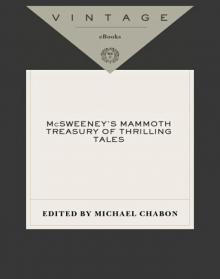 McSweeney's Mammoth Treasury of Thrilling Tales
McSweeney's Mammoth Treasury of Thrilling Tales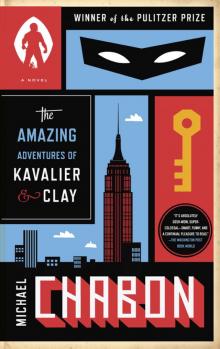 The Amazing Adventures of Kavalier & Clay
The Amazing Adventures of Kavalier & Clay The Yiddish Policemen's Union
The Yiddish Policemen's Union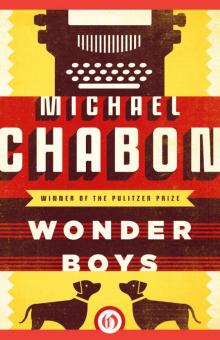 Wonder Boys
Wonder Boys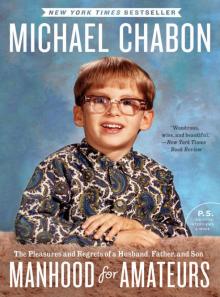 Manhood for Amateurs
Manhood for Amateurs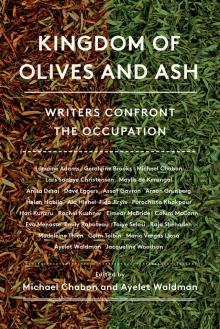 Kingdom of Olives and Ash: Writers Confront the Occupation
Kingdom of Olives and Ash: Writers Confront the Occupation Gentlemen of the Road: A Tale of Adventure
Gentlemen of the Road: A Tale of Adventure A Model World and Other Stories
A Model World and Other Stories Pops: Fatherhood in Pieces
Pops: Fatherhood in Pieces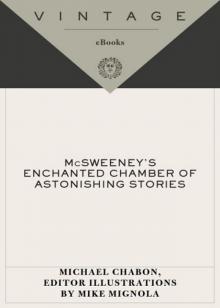 McSweeney's Enchanted Chamber of Astonishing Stories
McSweeney's Enchanted Chamber of Astonishing Stories Summerland
Summerland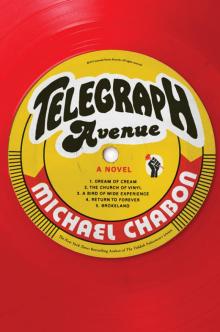 Telegraph Avenue
Telegraph Avenue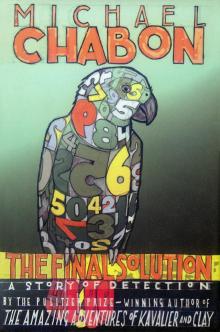 The Final Solution
The Final Solution The Mysteries of Pittsburgh
The Mysteries of Pittsburgh Werewolves in Their Youth
Werewolves in Their Youth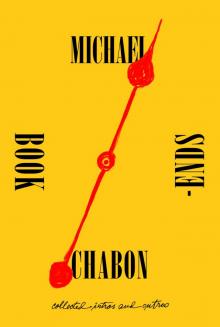 Bookends
Bookends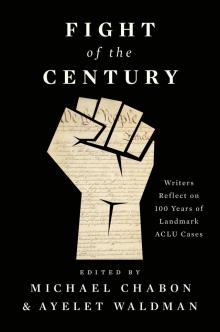 Fight of the Century
Fight of the Century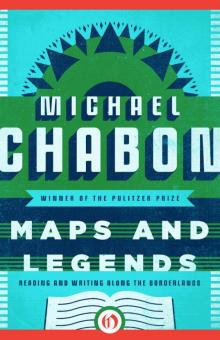 Maps and Legends
Maps and Legends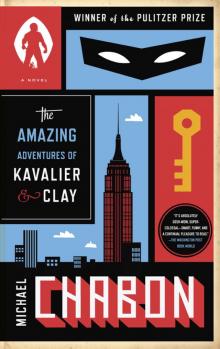 The Amazing Adventures of Kavalier & Clay (with bonus content)
The Amazing Adventures of Kavalier & Clay (with bonus content)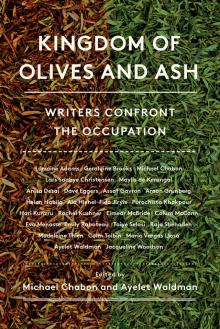 Kingdom of Olives and Ash
Kingdom of Olives and Ash Pops
Pops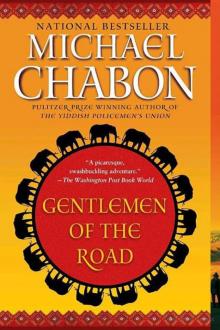 Gentlemen of the Road
Gentlemen of the Road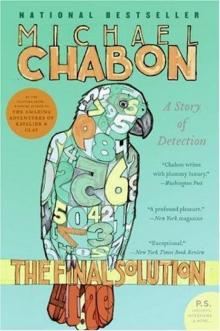 The Final Solution: A Story of Detection
The Final Solution: A Story of Detection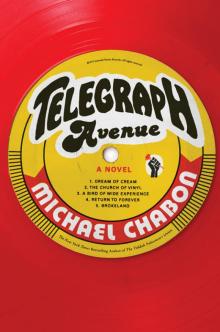 Telegraph Avenue: A Novel
Telegraph Avenue: A Novel